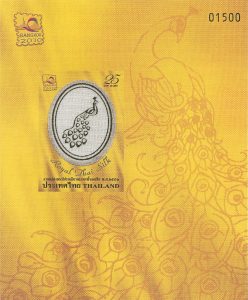
Small sheet with imperforated stamp of peacock in gold printed on white silk
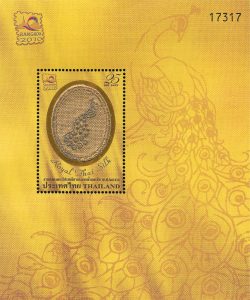
Small sheet with stamp embroidered with peacock on royal silk
These stamps from Thailand made of silk were designed for the opening of the “Bangkok 2010 Asian International Stamp Exhibition”. The stamps were created by Cartor Security Printing in France by offset litho printing on Thai silk. In addition to these 4 stamps, two sheets were also issued: the first sheet shows a peacock embroidered with brown silk thread on the golden silk fabric; the second sheet shows a peacock embossed in gold foil on a white silk fabric.
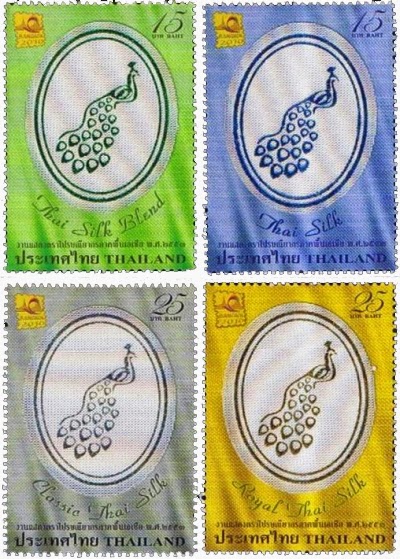
Four Thai silk stamps symbolizing four different qualities of silk.
Background: In order to honor Queen Sirikit (Queen of Thailand until 2016) and to promote Thai silk and silk products, the Post Office of Thailand has been granted permission to use the trademark or quality seal – the “Royal Peacock” – of Thai silk. The peacock symbolizes royalty and power in Thailand. The Thai Ministry of Agriculture has designed this quality seal for Thai silk to identify genuine, high-quality Thai silk. This seal is a peacock and depending on the color of the peacock (which can be found on the different brands) the buyer can see which silk quality it is. Thus,
- a golden peacock stands for Thai silk, which comes from the Thai mulberry moth and was made by hand.
- a silver peacock means that it is classic Thai silk, which comes from silk threads of the mulberry moth in hand processing.
- If the Thai silk is marked with a blue peacock, it is silk made from real silk threads, but without fixed production specifications. Therefore this silk can also be chemically dyed.
- Finally, a green peacock means that it is a silk product from Thailand, which is usually not pure silk but a blended fabric and whose production does not have to follow any fixed specifications.
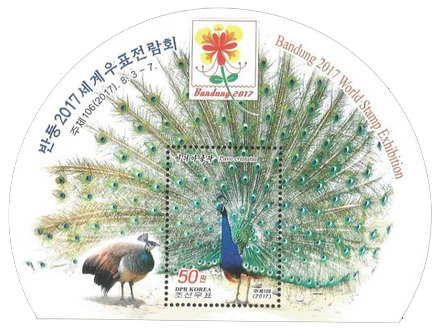
A peacock is especially beautiful when it turns its wheel.
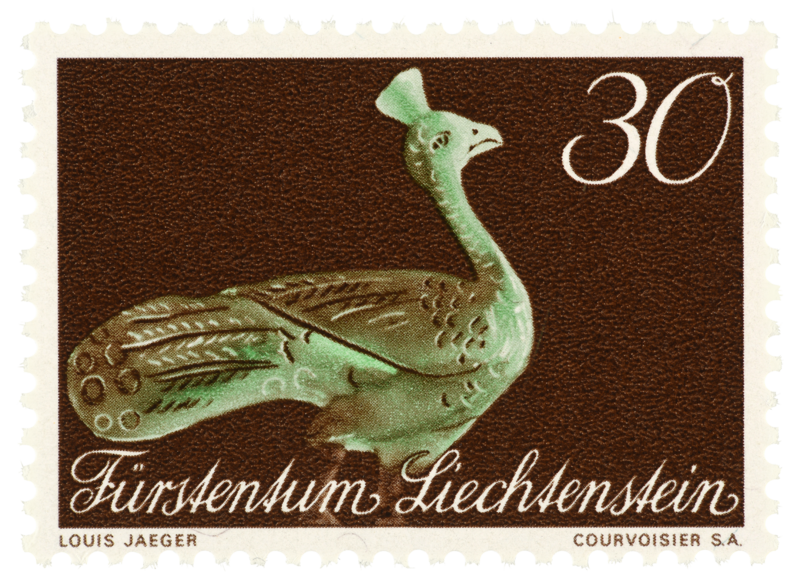
Liechtenstein has a special peacock as a showpiece
If these stamps should have inspired you now to buy genuine Thai silk, you should consider the following
- In terms of price, Thai silk is usually ten times more expensive than artificial silk.
- Thai silk is woven by hand. Therefore each silk fabric is unique.
- Thai silk has a unique sheen that has two unique blends: one color for the warp threads and another for the weft threads. Therefore the color changes when viewed from different angles.
- The silk is similar in composition to human hair and fingernails, which is why it smells like this when burned. Artificial silk smells like plastic when it is burned and continues to burn. However, this is obviously not a very good test to check the quality of silk.
- In contrast an easy way to identify authentic silk is the “wedding ring” test. When silk fabric is pulled through a ring, it passes easily. Imitation fabrics are difficult or impossible to pull through the ring.
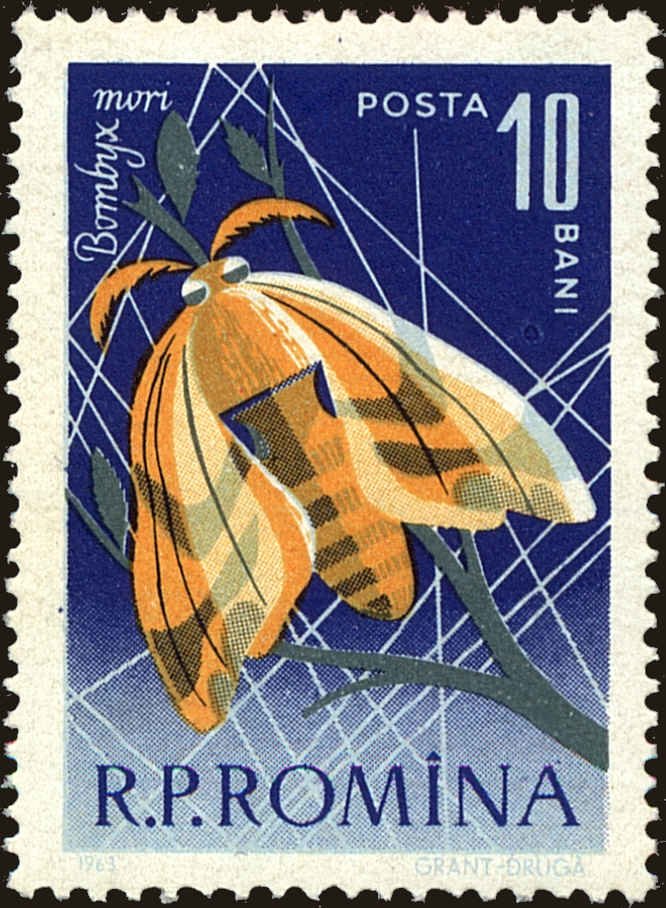
Silk moth butterfly
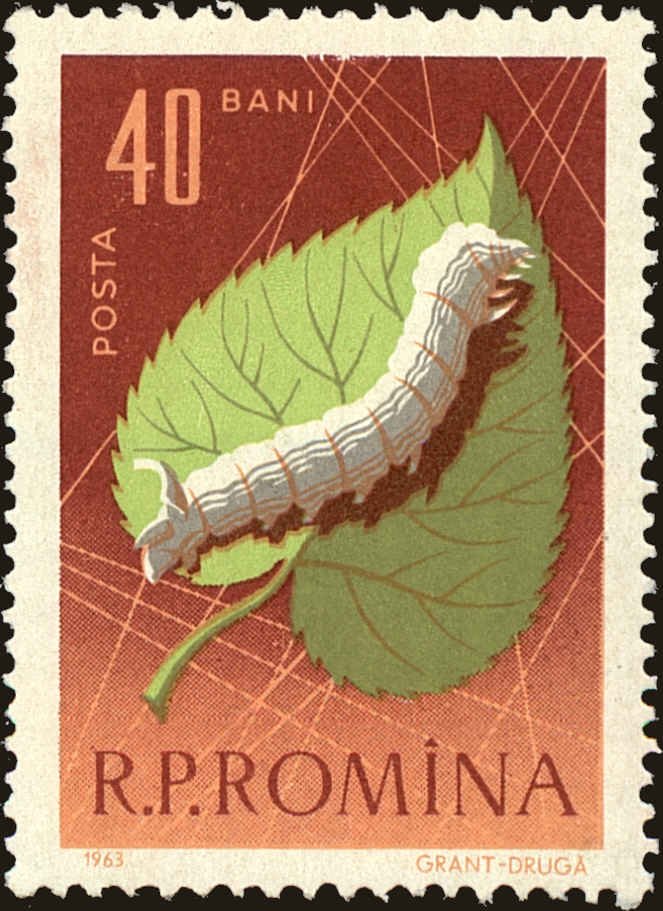
Silkworm on mulberry leaf
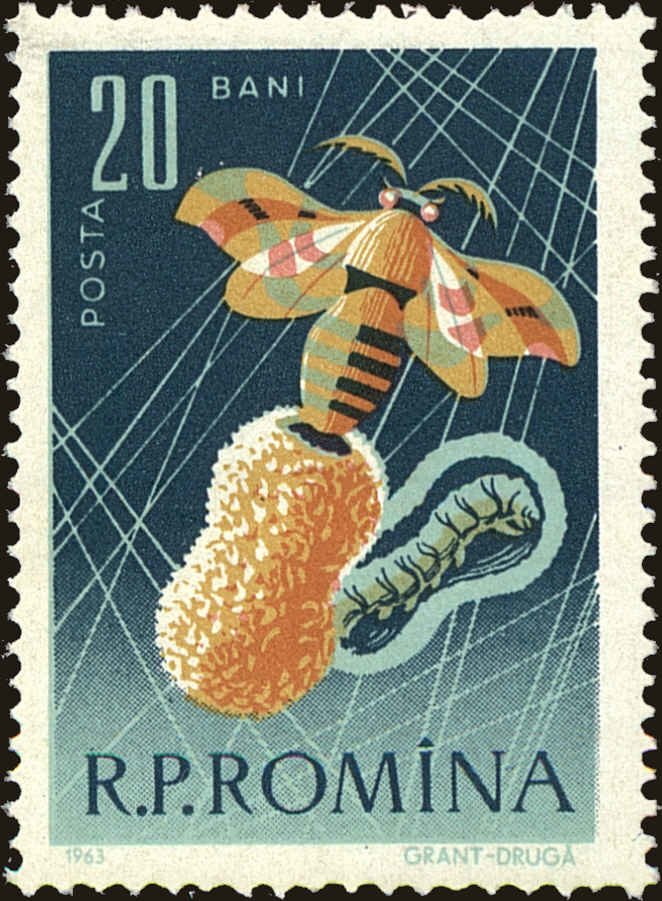
Cocoon of the silk moth from which the silk is extracted
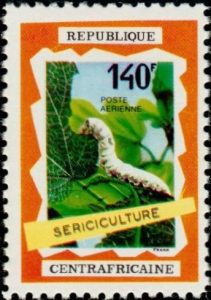
Sericiculture is the raising (culturing) of silkworms to produce raw silk
